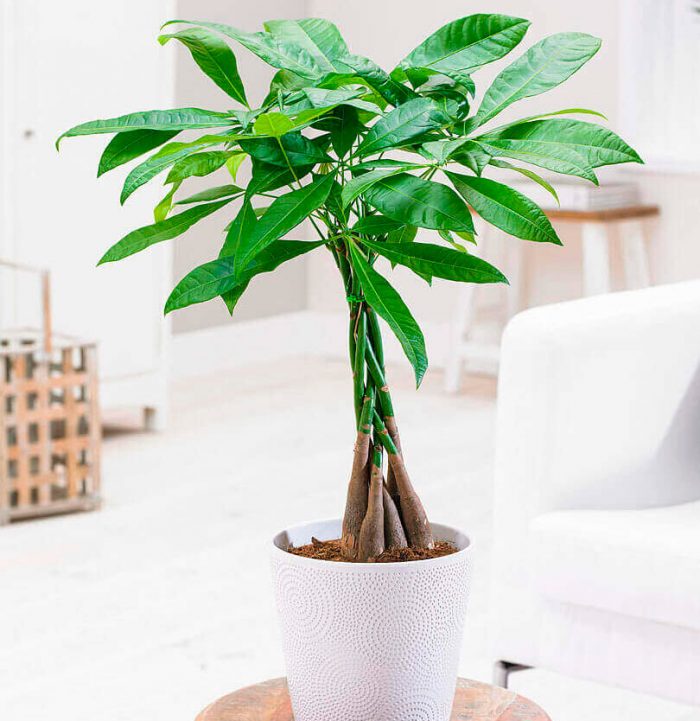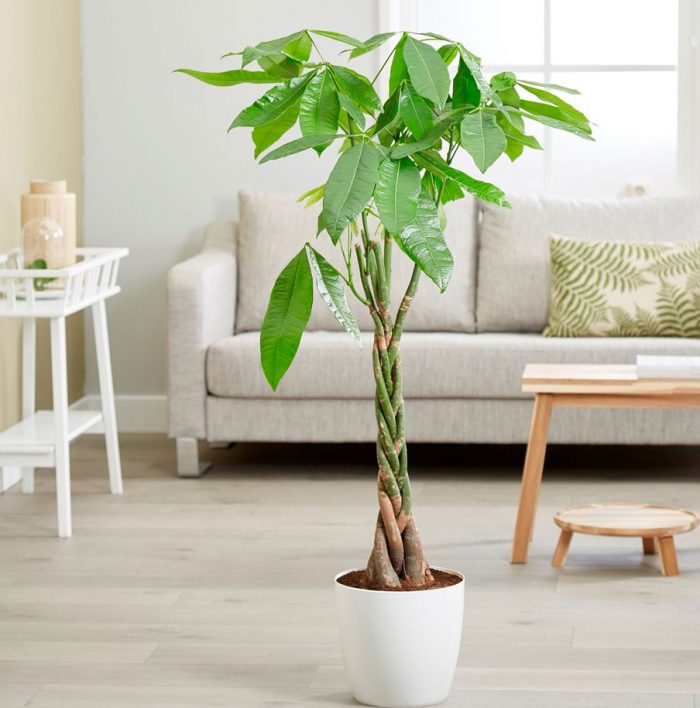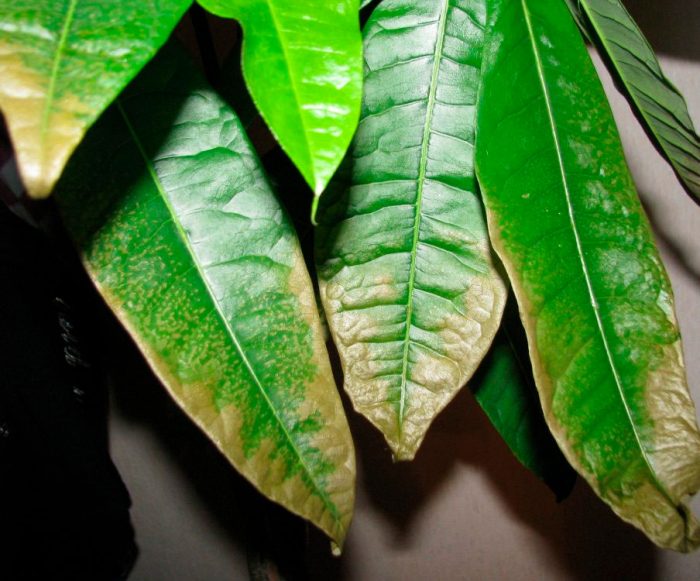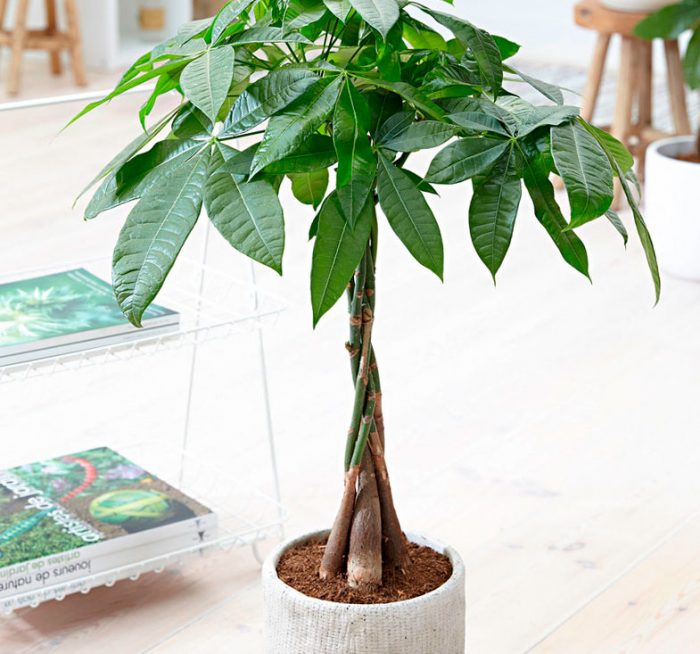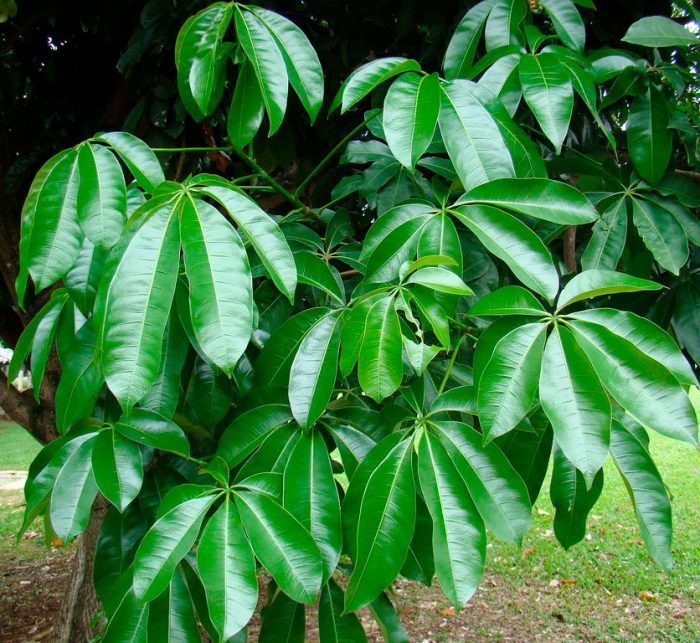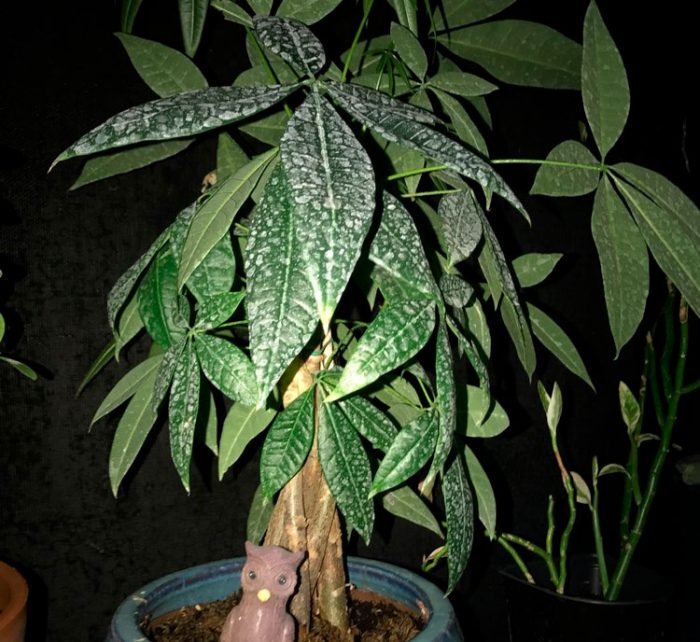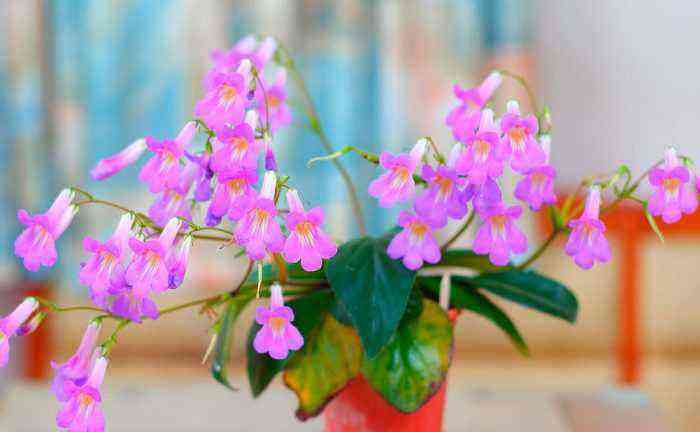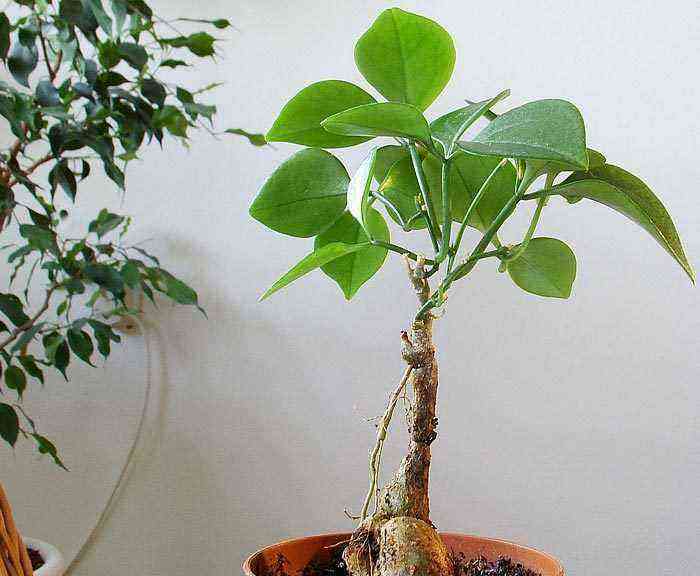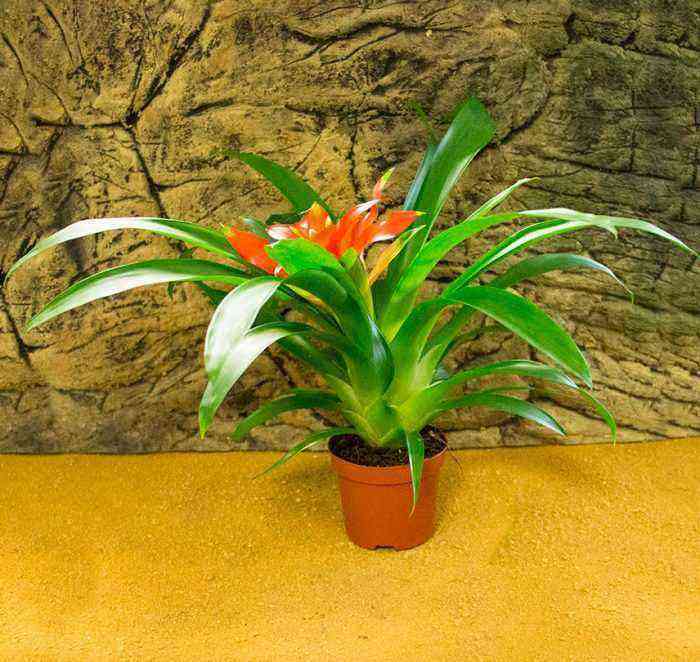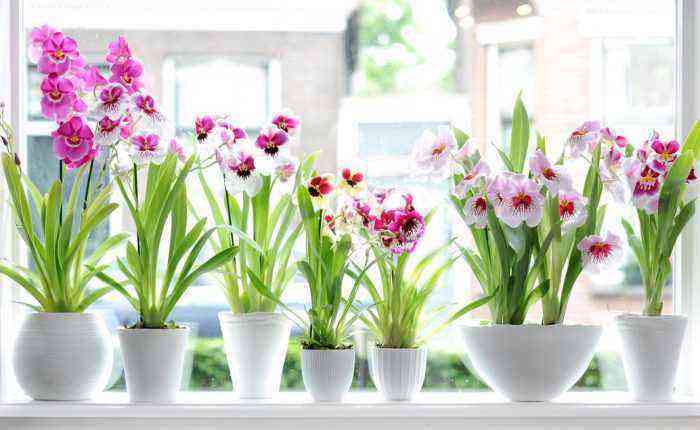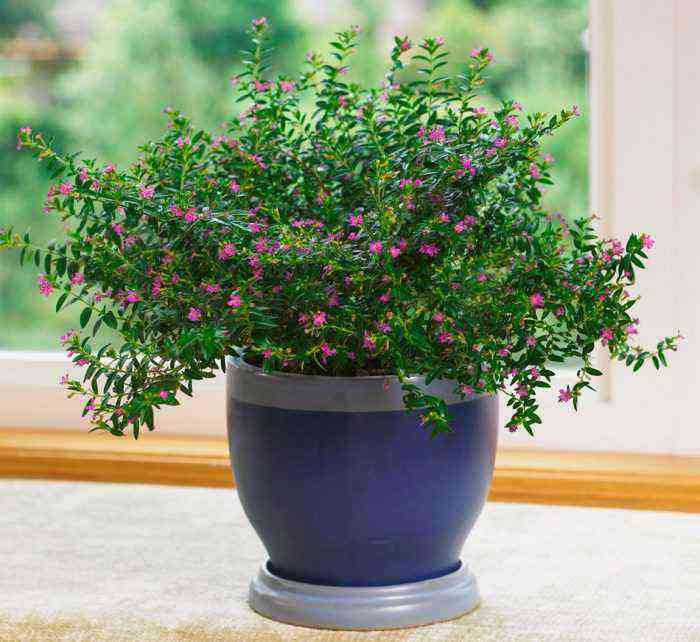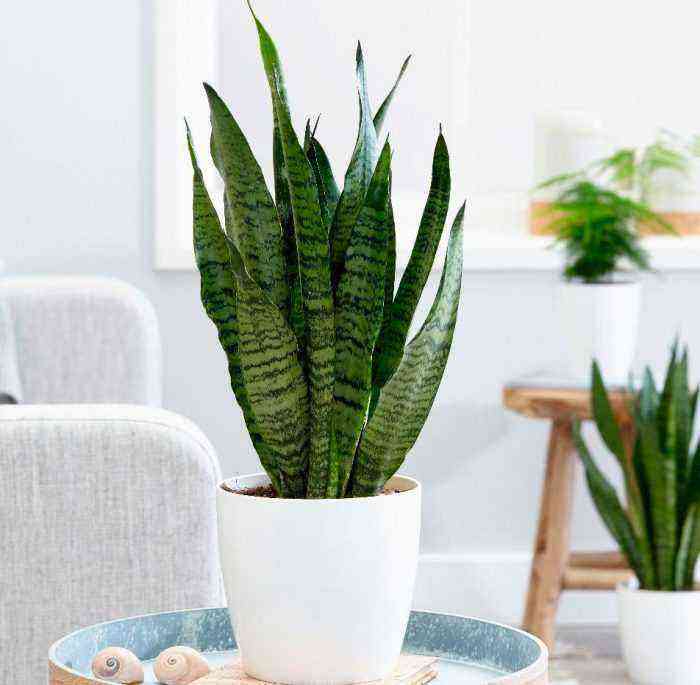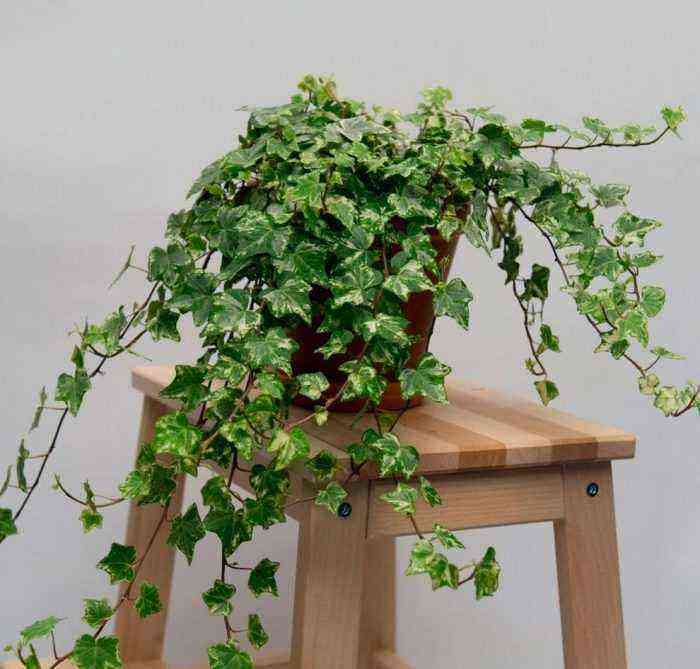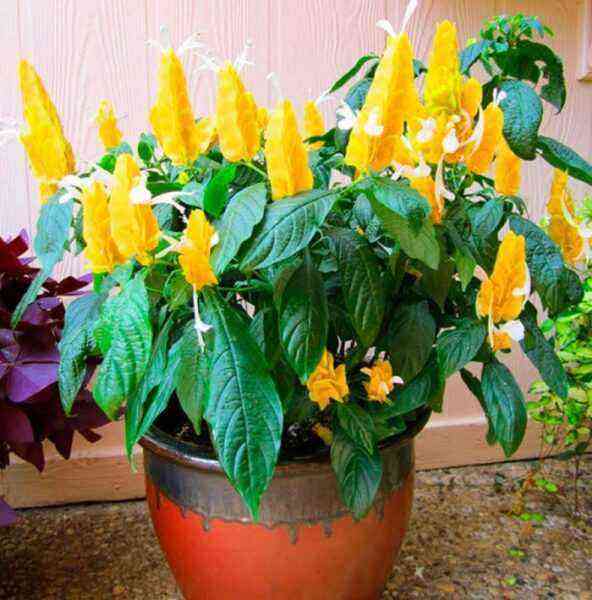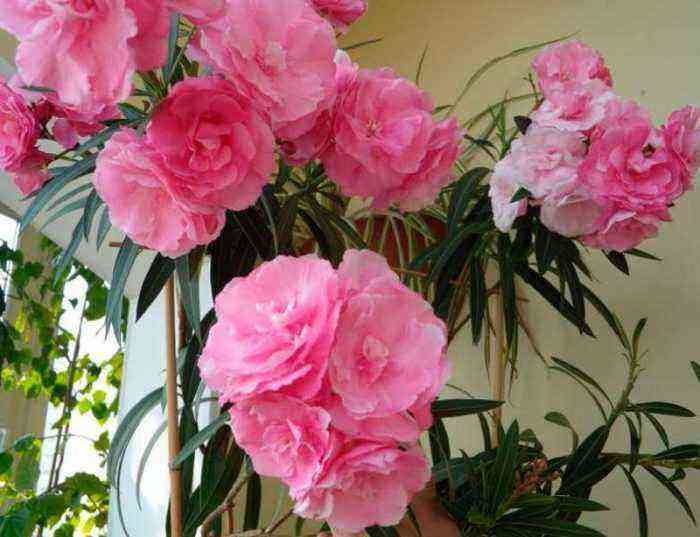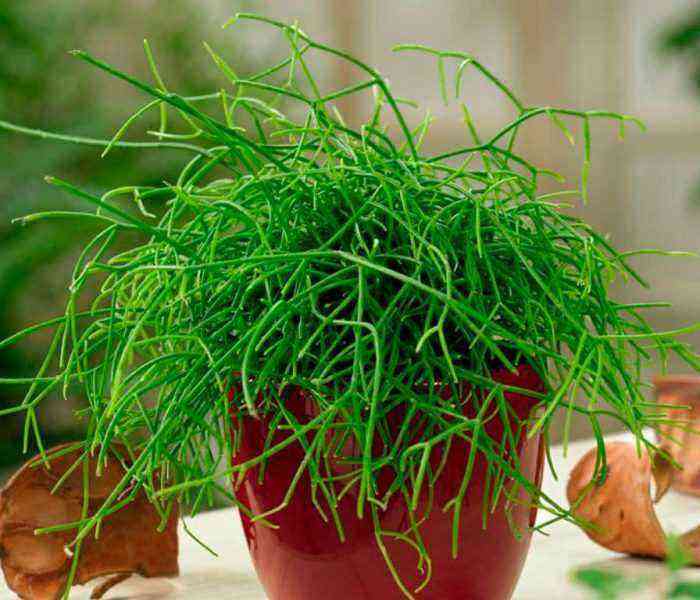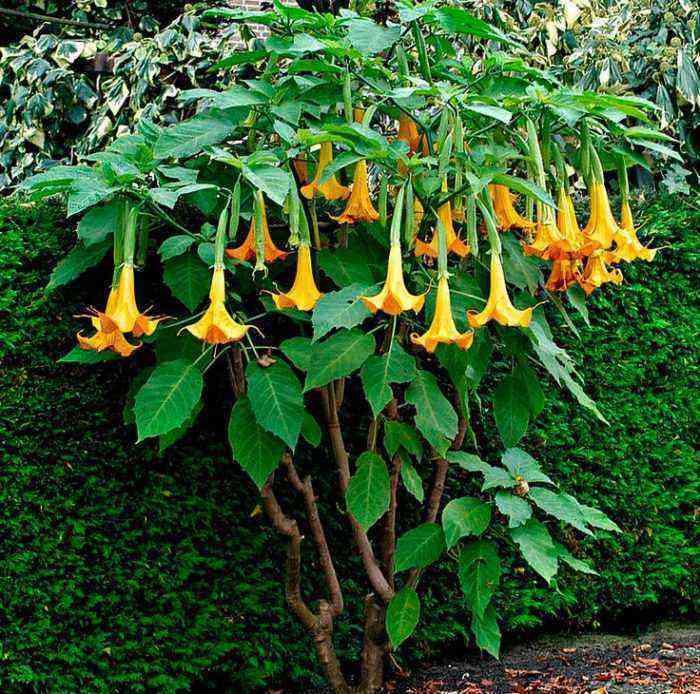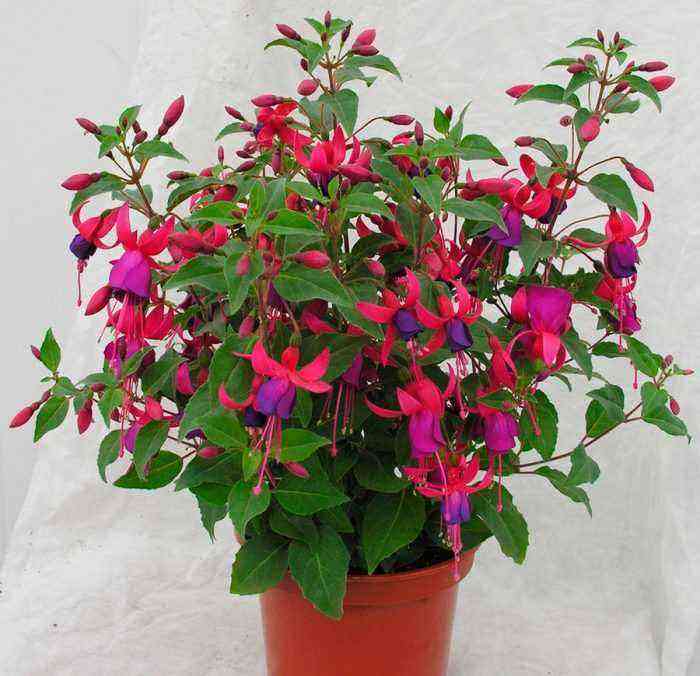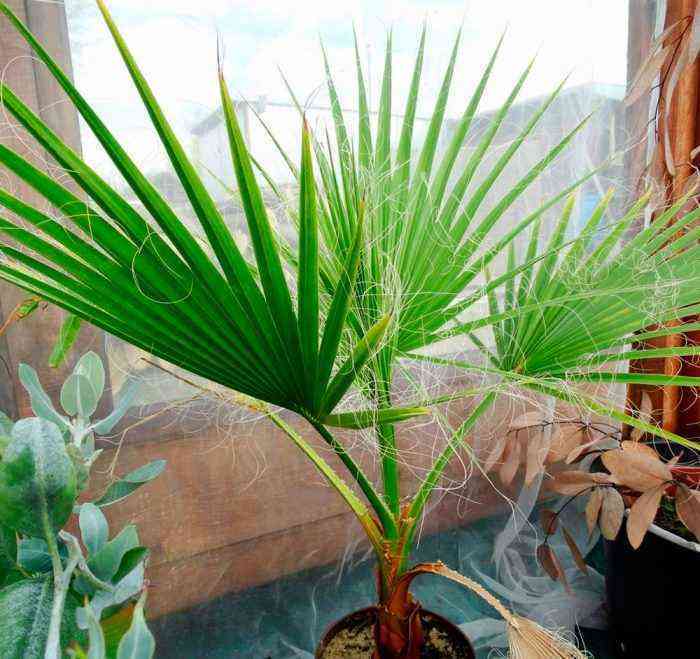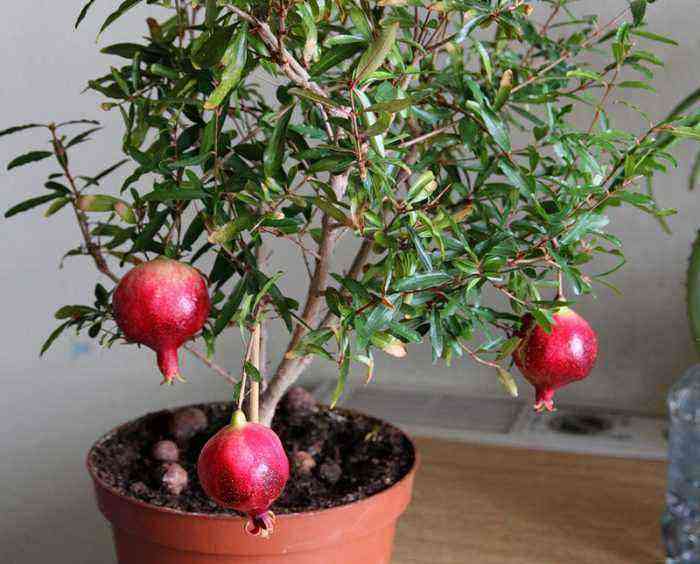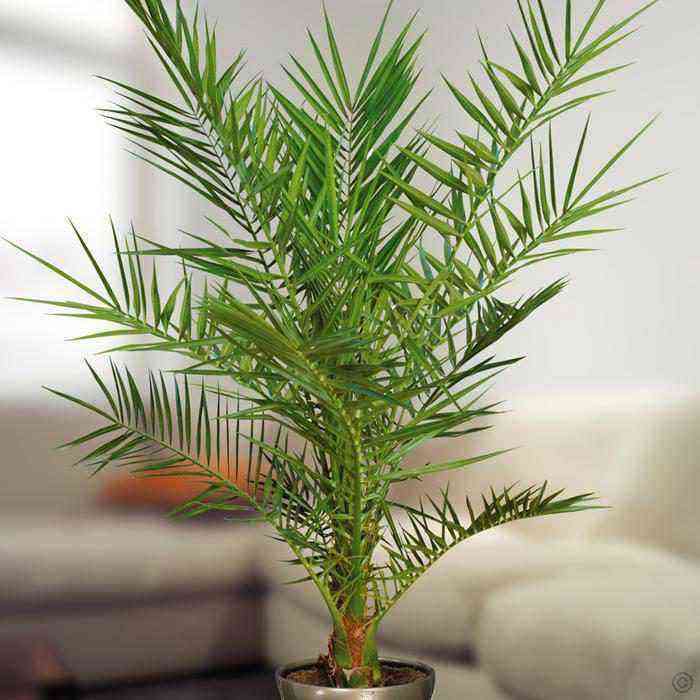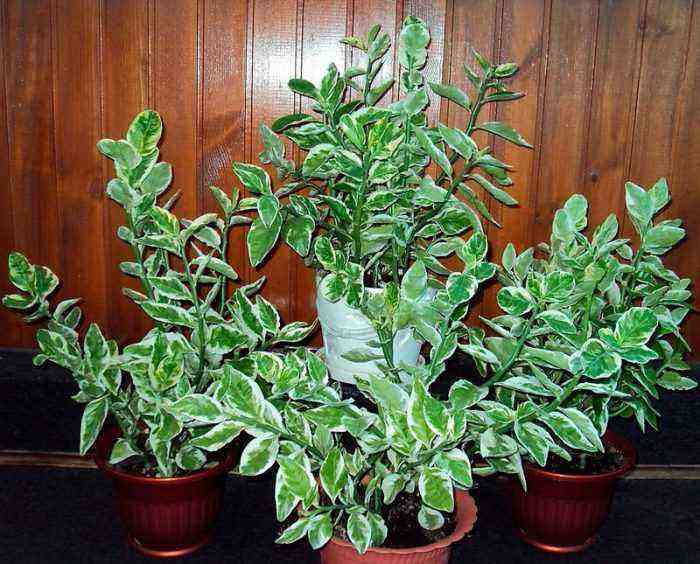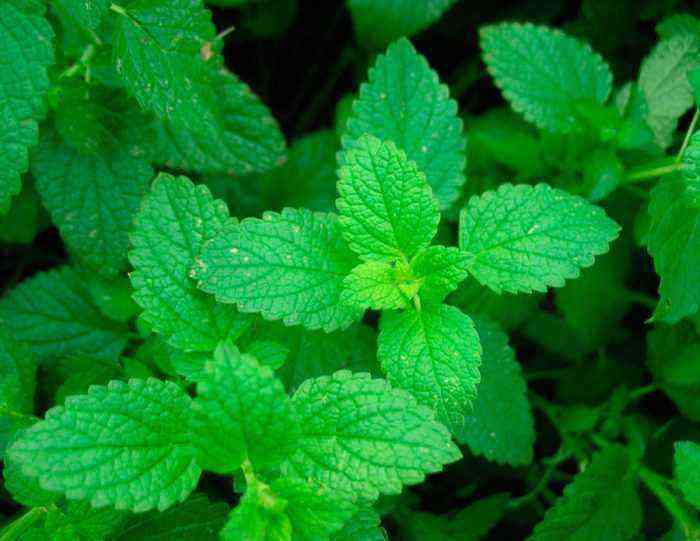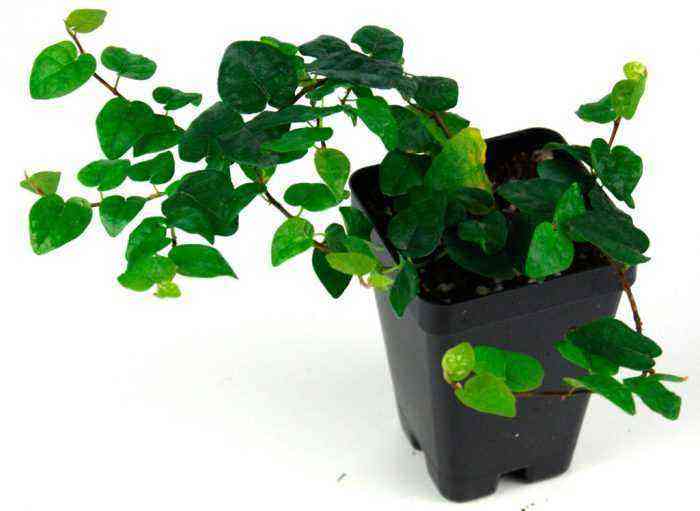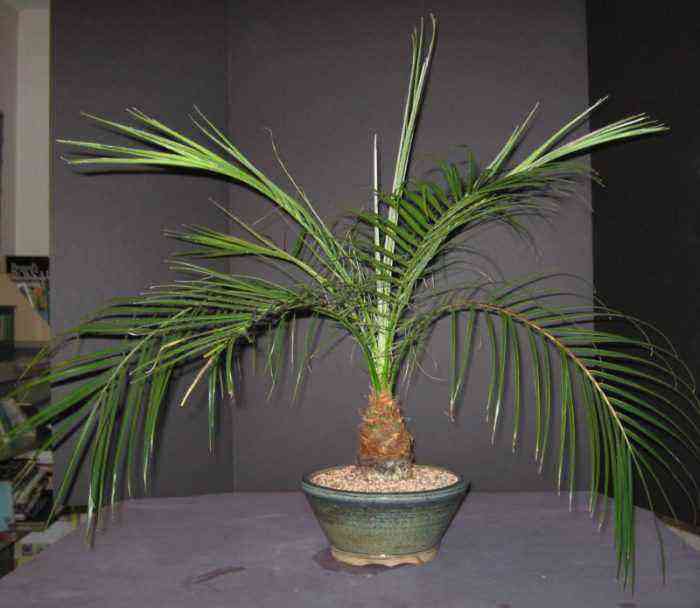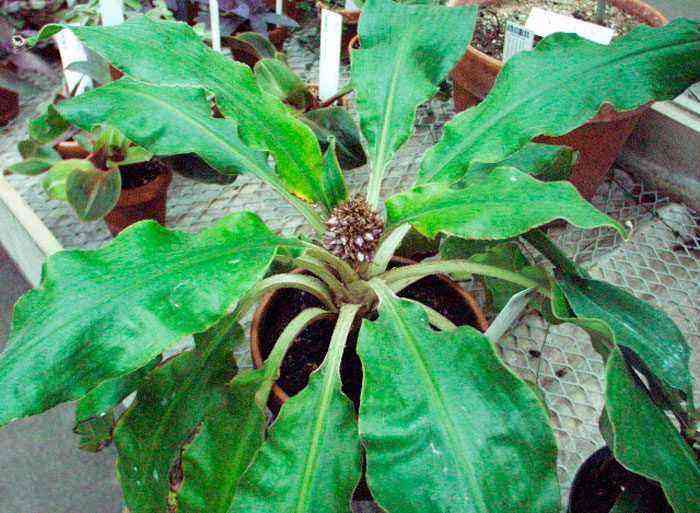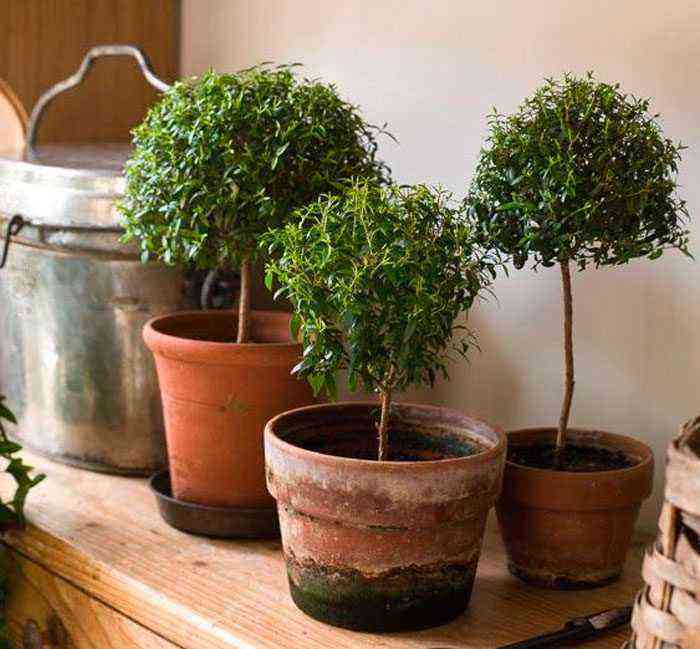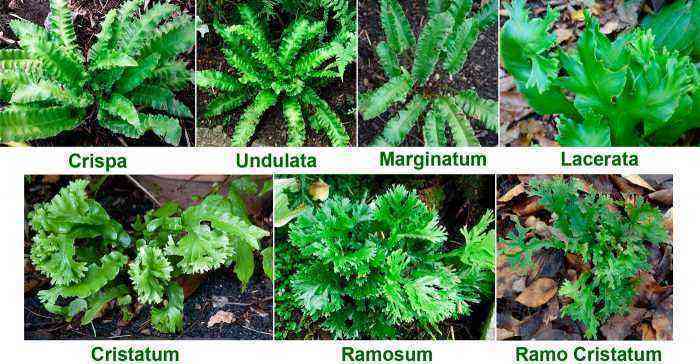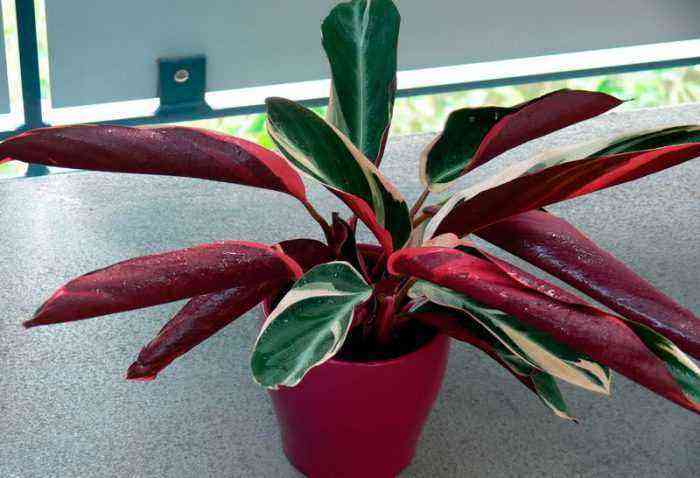The pachira plant, which is also called the saba nut, or Guiana chestnut, is part of the Malvaceae family. His homeland is Mexico. Translated from Latin, Pachira means “fatty”. The fact is that it has a hollow and solid trunk, which expands towards the root system. The peculiarity of the trunk is the ability to retain a large amount of moisture inside. The upper part of the trunk is relatively narrow. It is decorated with glossy green leaf plates.
The size of the bush directly depends on the growth conditions. So, in room culture, it is distinguished by its slow development, while its maximum height can reach no more than 3 m.
In the wild, the height of pakhira reaches 20 m. During flowering, it has spectacular unusual flowers, decorated with a large number of long stamens. When pollinated, light green fruits are formed in place of flowers, which can be eaten. Indoor pakhira does not produce flowers or fruits. If you provide her with good care and favorable conditions for growth, then she can live for about 10 years.
Such an ornamental plant also has healing properties. In alternative medicine, its bark is used for pain in the stomach or throat. The fruits are widely used in cooking: hot drinks are prepared from them, they are fried, and in a ground form they are used in baking bread. In addition, pakhira is considered a symbol of abundance in the house. Superstitious people believe that with the active growth of pakhira, luck and prosperity come to their home.
Brief description of cultivation
- Air temperature… In the warm season, the room should not be warmer than 23-25 degrees. During the autumn-winter period – no colder than 16 degrees.
- Air humidity… The air humidity should be high (about 60%).
- Illumination… The light should be bright and diffused. A southwestern or southern windowsill is perfect for a bush. Be sure to protect the pakhira from overheating.
- Watering… On hot summer days, the tree is watered 2 or 3 times every 7 days, using water that is slightly above room temperature. In the winter months, the substrate in the pot is rarely and sparsely moistened, but do not allow its top layer to dry out.
- Substrate… A soil mixture consisting of sand, leafy and soddy soil (1: 1: 1) is suitable. A good drainage layer must be made at the bottom of the pot.
- Fertilizer… Top dressing is carried out from the beginning of March to the end of November with a frequency of 1 time in 20 days. For this, it is recommended to use a mineral complex for decorative deciduous non-flowering plants.
- Transfer… A young bush is subjected to this procedure every year, and an old one – once every couple of years.
- Reproduction… Seeds, and they are sown in the spring, or cuttings (in late summer or early autumn).
- Features of care… Particular attention should be paid to watering, while avoiding stagnant moisture in the substrate. In addition, the plant must be provided with a large amount of bright light. With poor lighting, the growth of the bush slows down, and the foliage becomes faded.
Pakhira care at home
Temperature conditions
On hot days, make sure that the bush does not overheat. Therefore, it should not be allowed that the direct rays of the sun fall on it for a long time. It is also important that the air temperature in the room does not rise above 23-25 degrees. In winter, make sure that the tree is not exposed to low temperatures (below 16 degrees). Also at this time, protect it from drafts and place it as far as possible from working heating appliances.
Air humidity
Since the pakhira comes from the tropics, it feels comfortable only with high humidity. If the room has low air humidity, then the foliage must be systematically moistened with a spray bottle. When spraying the plant, make sure that moisture does not fall on the crown growth point, as this may cause rot. The foliage should be moistened with well-settled water, the temperature of which is close to room temperature.
Illumination
In order for the foliage of the tree to retain its spectacular appearance for a long time, it is important to provide it with a sufficient amount of light throughout the year. Poor lighting leads to the elongation of the stem, as well as to the loss of decorativeness by the crown.
Protect foliage from prolonged exposure of foliage to direct sunlight, as this can cause burns. Soft diffused sunlight is best suited for indoor pakhira. To protect the plant from the scorching rays of the sun, it needs to provide a little shading.
Watering
On hot summer days, the soil mixture in the pot must be moistened systematically. It is important to constantly maintain the optimum moisture level of the substrate. Watering is recommended only after the top layer of the soil mixture dries up. In the winter months, pakhira is watered less often, while it is recommended to moisten the substrate only when its top layer dries out to a depth of 30-40 millimeters. Please note that if the irrigation regime is violated, rot may appear on the plant.
For irrigation, it is recommended to use rainwater or well-settled water. Bottom watering is not suitable for such a tree.
Pot selection
When choosing a container for planting pakhira, you should pay attention to the size of the plant itself and its root system. While the bush is young, it has a poorly developed root system and therefore does not need a tall pot. Choose a low container, which should be at least 29 centimeters across.
If the container is too tight, it will slow down the growth of the bush. If the pot is too deep, then the roots will not be able to master the earthen lump completely, and this can cause the soil mixture to acidify.
Substrate
For pakhira to grow and develop normally, it needs a well-drained soil mixture that does not contain a lot of nutrients. To prepare the substrate with your own hands, combine the leaf and sod soil with an admixture of brick chips and sand in equal proportions. Instead, you can use a ready-made universal soil mixture for dracaena and palms. The main thing is that the soil mixture passes air and water well, a high-quality drainage layer at the bottom of the pot is also important.
Fertilizer
It is necessary to apply fertilizer to the soil mixture during the spring and summer at a frequency of 2 times a month. For feeding, it is recommended to use a special mineral fertilizer for decorative deciduous indoor crops. To prepare the nutrient solution, use ½ part of the dosage indicated in the manufacturer’s instructions.
Alternatively, you can feed on foliage using an anti-stress solution, and during its preparation, you should adhere to the dosage indicated on the package. In the autumn-winter time, feeding is not carried out.
Transplantation of the pagira
It is very important for home pakhira to ensure timely transplants. Thanks to this, the period of intensive growth of the bush is extended. A young plant is subjected to this procedure annually in the spring. An older bush should be replanted once every 1 years. During each transplant, the old soil mixture should be completely removed, replacing it with a fresh one.
Step-by-step instruction:
- remove the bush from the old pot and straighten its roots a little;
- immerse the root system in a container of water, it is pulled out after about 15 minutes;
- remove the entire substrate from the roots, and you should also examine them and cut out all injured, dead and rotten areas;
- if there is such a need, then shorten healthy roots;
- pour the soil mixture into a new pot in such a way as to make a small slide;
- set the bush in a pot and gently spread its roots over the entire volume of the container;
- fill all voids with fresh substrate.
Trimming
It is not necessary to trim the room pakhira. However, if the tree has lost its decorative effect, then it is still necessary to cut it off. This procedure should be carried out at the beginning of the spring. In the place where the cut was made, the plant begins to branch, while the crown transforms: it becomes spherical and thicker. Dried or dead leaf plates are cut as needed at any time.
Flowering
Pakhira blooms very effectively, while its flowers have a pleasant light vanilla smell. However, such a tree blooms only in the wild or in a greenhouse. Most often it blooms in the first summer weeks, and fades at the end of November. The unusual flower consists of a large number of long red or rich yellow stamens, which are bordered by petals of pale green, light pink or cream color.
In length, the flower reaches 30–35 centimeters, and in diameter – from 10 to 15 centimeters. After pollination, a fruit is formed in the place of the flower. A fully ripe fruit splits into two parts, while inside it you can find about two dozen rounded “nuts” that are edible.
Methods of reproduction
Cutting
Pakhira at home is often propagated by cuttings. The length of the segment should be about 10 centimeters, while the stalk should have a formed structure and a pair of leaf nodes.
Rooting process:
- the lower part of the segment is dipped in an agent that stimulates the growth of roots;
- for rooting, a substrate consisting of charcoal, sifted sand, sphagnum moss and leaf humus (2: 2: 1: 2) is used;
- the soil mixture must be disinfected;
- for planting the segments, plastic cups or containers are used, and at their bottom there must be drainage holes;
- the cuttings are buried in the substrate by 3 centimeters, then they are watered.
The roots will grow back after about 20 days. You can root the segments in a glass of water, but for this they need to provide optimal conditions: air temperature – from 20 to 22 degrees, diffused sunlight, about 80% humidity.
The lower part of the segments is also dipped in a growth stimulator, and then placed in a container filled with clean water. When the roots grow back, the cuttings are planted in the soil mixture in a permanent pot. A young bush at this time is experiencing great stress, and therefore it is recommended to create the most favorable conditions for growth.
Cultivation from seeds
Take an airtight bag and put in it sphagnum moss with a layer of 20-30 millimeters, before that it must be soaked and squeezed out. Place a pakhira seed on it, after which it is again covered with a layer of sphagnum on top. Seed germination is low: out of 10 seeds, an average of 3 or 4 emerge. Therefore, you will have to sow at least 4 or 5 seeds, each in a separate bag to see at least one seedling.
In order for a seedling to appear from a seed, the crops must be provided with optimal conditions:
- temperature is about 25 degrees;
- diffused lighting;
- slightly moist sphagnum (it should not be excessively moist);
- the level of humidity in the room is about 80%;
- you need to ventilate several times a day.
After the seed sprouts, it is carefully planted in the substrate along with the sphagnum. During the first 7 days after planting, crops need to be provided with increased air humidity. After 30 days, you can feed the plant for the first time, but only if it is actively growing and developing.
Possible problems
With improper care with room pakhira, problems such as:
- Yellow foliage… The plant is in dire need of trace elements and nutrients.
- Fly around the sheet plates… The tree is located in the immediate vicinity of working heating appliances.
- The foliage loses its turgor and withers… Pakhir needs to be watered urgently.
- Leaves become faded and dry out… Too poor lighting. Experts advise making sure that the direct rays of the sun hit the bush every day in the evening or morning.
- Light specks form on the leaf plates… In extremely bright light. Because of this, sunburn appears on the foliage.
- The foliage becomes soft… As a rule, this is observed during the cold season, when the air temperature in the room drops below 15 degrees.
- Twisting sheet plates… This is due to frequent exposure to drafts and very low air temperatures.
- The leaves turn black and fly around… This is a clear sign that the tree is dying.
- Pulling out the bush… This is due to the fact that the pakhira stands in the shade all the time and is in dire need of direct sunlight.
- vermin… The plant can accommodate scale insects, spider mites, thrips and aphids. However, this happens very rarely.
Types of pakhira with photos and names
Pakhira aquatica, or water (Pachira aquatica)
Glossy long-stemmed leaf plates are colored green. The length of the paniculate inflorescences is about 30 centimeters. The flowers have a vanilla scent. After pollination, pale green fruits are formed, while inside them there are about two dozen nuts that can be eaten. The nuts are covered with a high density peel. The fruits, bark and foliage have healing properties. They are used both in folk medicine and in cooking.
Round-leaved pachira (Pachira rotundifolia)
This type of pakhira is the rarest. A characteristic feature is the unusual structure of rounded leaf plates. Under natural conditions, the stems of this species spread over the soil surface. In this regard, in room culture, you can use a flowerpot or hanging planter for planting it.
Silver Pachira (Pachira argyreia)
This species is very similar to water pakhira. It differs only in that on the surface of its leaf plates there are a large number of filamentous strips of silver color.

